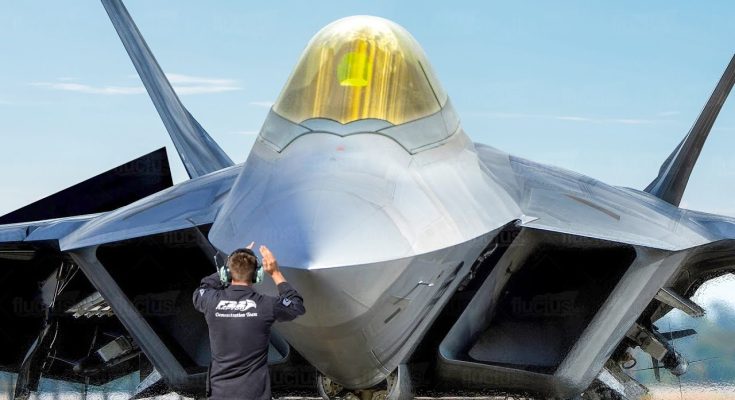The F-22 Raptor, once considered the pinnacle of fifth-generation stealth fighter aircraft, has stunned the world once again after a hypersonic upgrade was announced. Known for its unmatched air dominance, agility, and stealth capabilities, the F-22 has long been the cornerstone of the U.S. Air Force’s tactical superiority. With the addition of hypersonic technology, this already advanced aircraft has received a significant boost in performance, further cementing its role as a global military powerhouse.
What is Hypersonic Technology?
Hypersonic speed is defined as speeds greater than Mach 5, or five times the speed of sound (approximately 3,836 miles per hour at sea level). For decades, hypersonic technology has been a topic of intense research and development, offering the potential to drastically enhance weapon systems, aircraft, and missiles. The integration of hypersonic capabilities into an already world-class fighter like the F-22 Raptor is a game-changer, offering several tactical advantages, such as rapid response times, unmatched speed, and a drastically reduced time to target.
Enhanced Speed and Agility
The F-22’s hypersonic upgrade transforms it into an aircraft capable of exceeding Mach 5 in flight, making it faster than any other current fighter jet. This hypersonic speed allows the F-22 to outmaneuver and outrun enemy aircraft, missiles, and even air defense systems. By dramatically reducing the time it takes to reach critical locations or engage adversaries, the hypersonic F-22 can rapidly respond to threats, engage targets, or provide support to ground operations.
In combat scenarios, speed is a crucial advantage. With the ability to travel at hypersonic speeds, the F-22 can effectively neutralize enemy threats before they even have time to react, giving it a significant edge in both air-to-air and air-to-ground missions.
Advanced Propulsion and Hypersonic Weapons
The F-22’s hypersonic upgrade is made possible by cutting-edge propulsion systems, such as scramjet technology, which allows the aircraft to maintain extreme speeds while optimizing fuel efficiency. Scramjets are capable of operating at hypersonic speeds by compressing incoming air in their engine in a way that traditional turbojet engines cannot, making them ideal for long-range, high-speed flight. This advancement also significantly extends the F-22’s range, allowing it to cover vast areas of airspace with greater fuel efficiency.
Additionally, the integration of hypersonic weapons with the F-22’s weapons systems enhances its versatility in combat. Hypersonic missiles and bombs can travel at speeds that current air defense systems cannot intercept, making them ideal for targeting high-value assets, such as enemy command centers or missile launch sites, before adversaries even realize the threat.
The aircraft’s avionics and weapons control systems are upgraded to accommodate hypersonic speeds, with enhanced targeting sensors, radar, and real-time data processing. This allows the F-22 to maintain precise targeting and communication with command and control systems, even while operating at Mach 5+ speeds.
Stealth and Combat Effectiveness
Despite the significant speed increase, the F-22 retains its stealth capabilities, making it nearly invisible to enemy radar. The aircraft’s sleek design, advanced materials, and low-observable features allow it to fly undetected in contested airspace, even at hypersonic velocities. This combination of speed and stealth makes the F-22 a truly formidable force, capable of penetrating heavily defended enemy airspace without being detected or intercepted.
The hypersonic upgrade also gives the F-22 the ability to conduct missions previously deemed impossible for traditional fighters. For instance, it could engage time-sensitive targets with extreme precision, carry out rapid strike missions against heavily fortified positions, or even intercept and destroy enemy hypersonic missiles before they reach their intended targets.
Global Shockwaves
The announcement of the F-22 Raptor’s hypersonic upgrade has sent shockwaves through the global defense community. As other nations race to develop their own hypersonic capabilities, the U.S. Air Force’s ability to seamlessly integrate this technology into an already formidable fighter jet has raised the stakes in the modern arms race. Countries with advanced air forces, including China and Russia, are now facing a new level of competition, as the F-22’s enhanced capabilities drastically increase the U.S.’s advantage in air superiority.
In conclusion, the F-22 Raptor’s hypersonic upgrade has fundamentally altered the landscape of aerial combat, making it the most advanced and dangerous fighter jet in existence. Its combination of speed, stealth, agility, and cutting-edge technology gives it an unprecedented edge over adversaries and solidifies its place as the dominant force in the skies. With hypersonic speed at its disposal, the F-22 is now capable of redefining the speed and precision of military operations, ensuring that the U.S. remains at the forefront of aerial combat for years to come.



